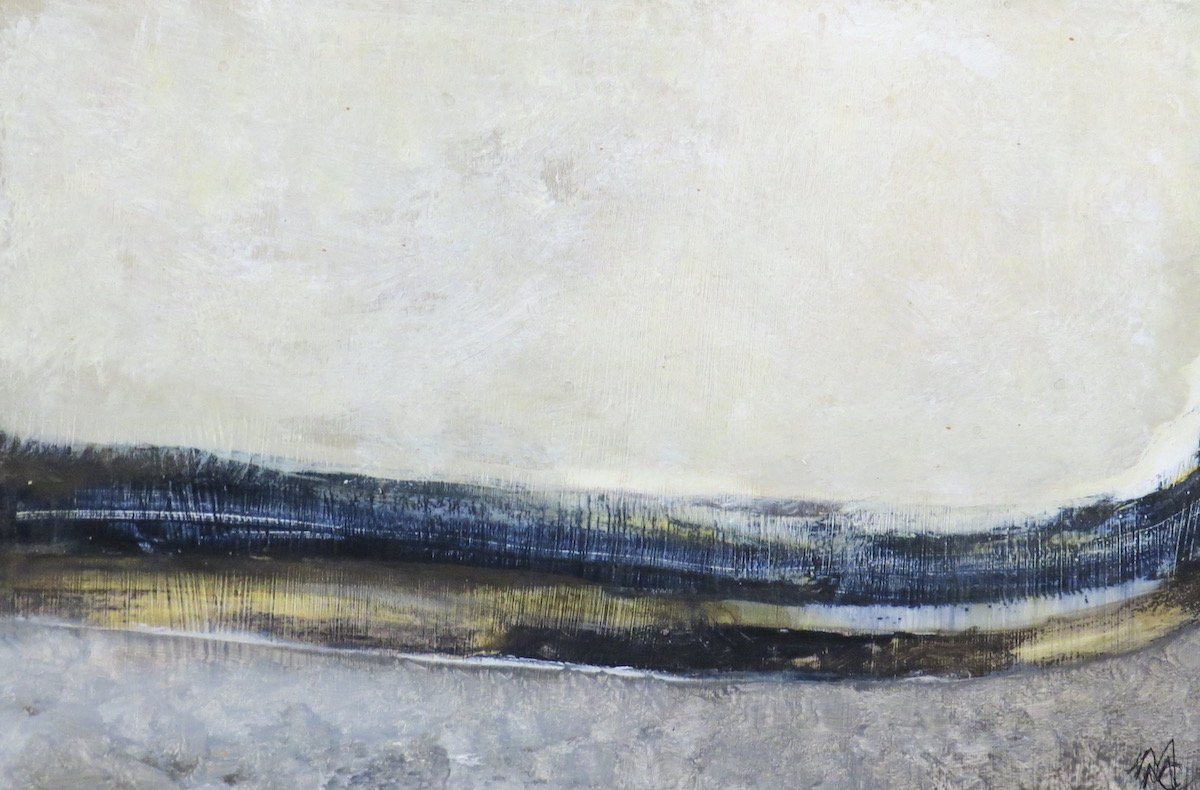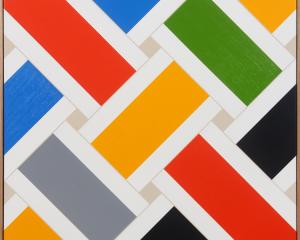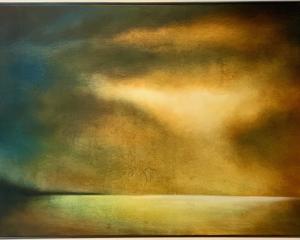
(Pea Sea Art)
Pea Sea Art’s annual group show, "Behind Closed Doors", features some impressive work from a group of 14 artists. Several of the artists are fairly well known locally; others are exhibiting in the region for the first time.
Angela Burns is perhaps the best-known of the creators locally, and is represented by two pieces in which her soft blocks of intertwined colour hint subtly at figures. Marnie Campbell also works within a semi-abstract style, with three excellent geologically stratified landforms. A more purely abstract approach is taken by several of the artists, including the visceral textures of Jon Cox and soft colour fields of Trisha Bennett. Andrew Dickison also tackles abstract principles with his rigorous constructions.
Among the more figurative pieces, several stand out. Bo Stent’s cartoon-like Lean On and subverted Madonna and Child are impressive pieces, as are Megan Corbett’s mixed-media works and two fine bird studies by Tessa Watson.
Barry Squire’s surrealist art is also notable, especially the more construction-like Gaia’s Keyhole Surgery and What Duchamp Was Perceivably Looking At.
The overall feeling of the exhibition is definitely favourable, with fascinating art by a number of artist’s little known to Dunedin viewers. Pea Sea’s annual shows continue to impress.

(Brett McDowell Gallery)
David Cauchi is, in his own words, a "Sensitive Bullshit Artist".
If that sounds tongue-in-cheek, then so too, subtly, is the art in his exhibition at Brett McDowell Gallery. Not in the sense that the work is bad — quite the opposite — Cauchi’s dark sense of humour glints through, exemplified in his self-portrait as a corpse, Dead Man Asleep.
Cauchi’s works are mixed media, either in graphite and watercolour on paper or in coloured pencil, watercolour and oil on linen.
The former are largely gentle pieces in muted colours, mostly featuring a surprising central element in pencil — a hippopotamus, a hanged pierrot clown, a portrait with a playing-card club for a face — surrounded by blooms of diluted watercolour.
The works are surprisingly effective, their surreal import nagging at the viewer.
A similar principle of using a central mysterious element is common with many of the linen-backed work.
A joke squirt flower, a beckoning hand and an antique lamp challenge the observer to find meaning.
The titles, if anything, add further mystery. A hand cradling a thistle is Metaphysics, a vintage light switch is Future tense.
The images taunt and intrigue, and their hidden meanings will tease viewers for some time after they have seen the works.

(Moray Gallery)
Jenny Longstaff presents her latest exhibition at Moray Gallery. The artist has chosen a tondo form for her art, with fifteen round mixed-media pieces.
The images are in two groups: six flower studies and nine larger landscapes and seascapes.
In the smaller studies, the artist has started with a wash of acrylic over which she has added a profusion of blooms in coloured pencil. The flowers are not depicted with botanical precision, rather being intended as impressions of gardens. Dark lines have been used selectively to cleverly produce a feeling of depth in images such as Among the Grasses and Spring Blooms.
In the larger works, Longstaff has used a looser, more painterly style, creating moody vistas. While the more tranquil scenes are effective, it is the more active works which are the strongest.
In these, it is the natural world which produces the motion.
In Winging It, Van Gogh’s skies are invoked in the painting’s vortex of cloud.
In Turbulent and Racing the Storm, the motion of a rough sea and impending clouds provide the impact. This last work is perhaps the one in which Longstaff’s environmental message is most clear: the circle of the painting is our earth seen from space, and the approaching storm is that of climate disaster.












